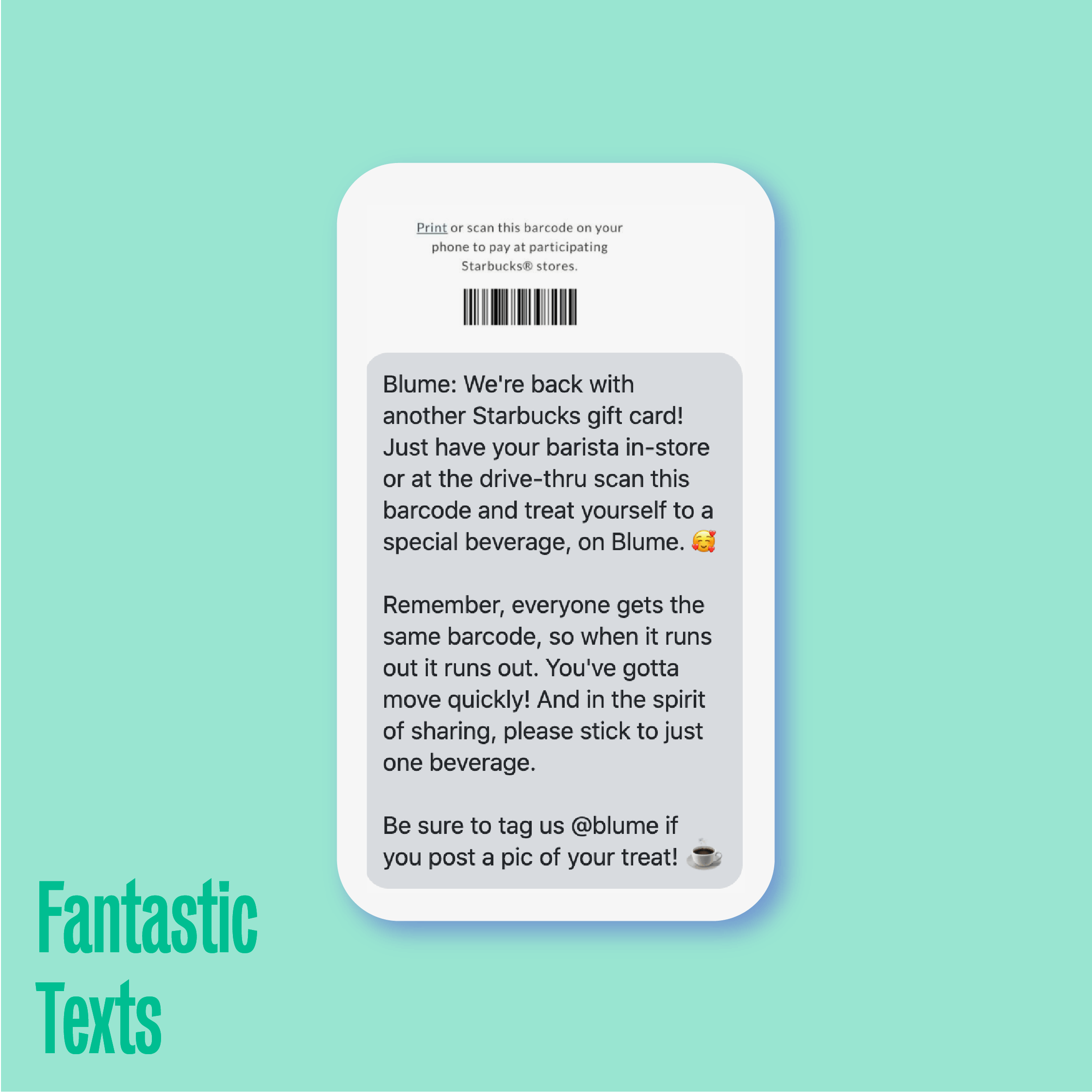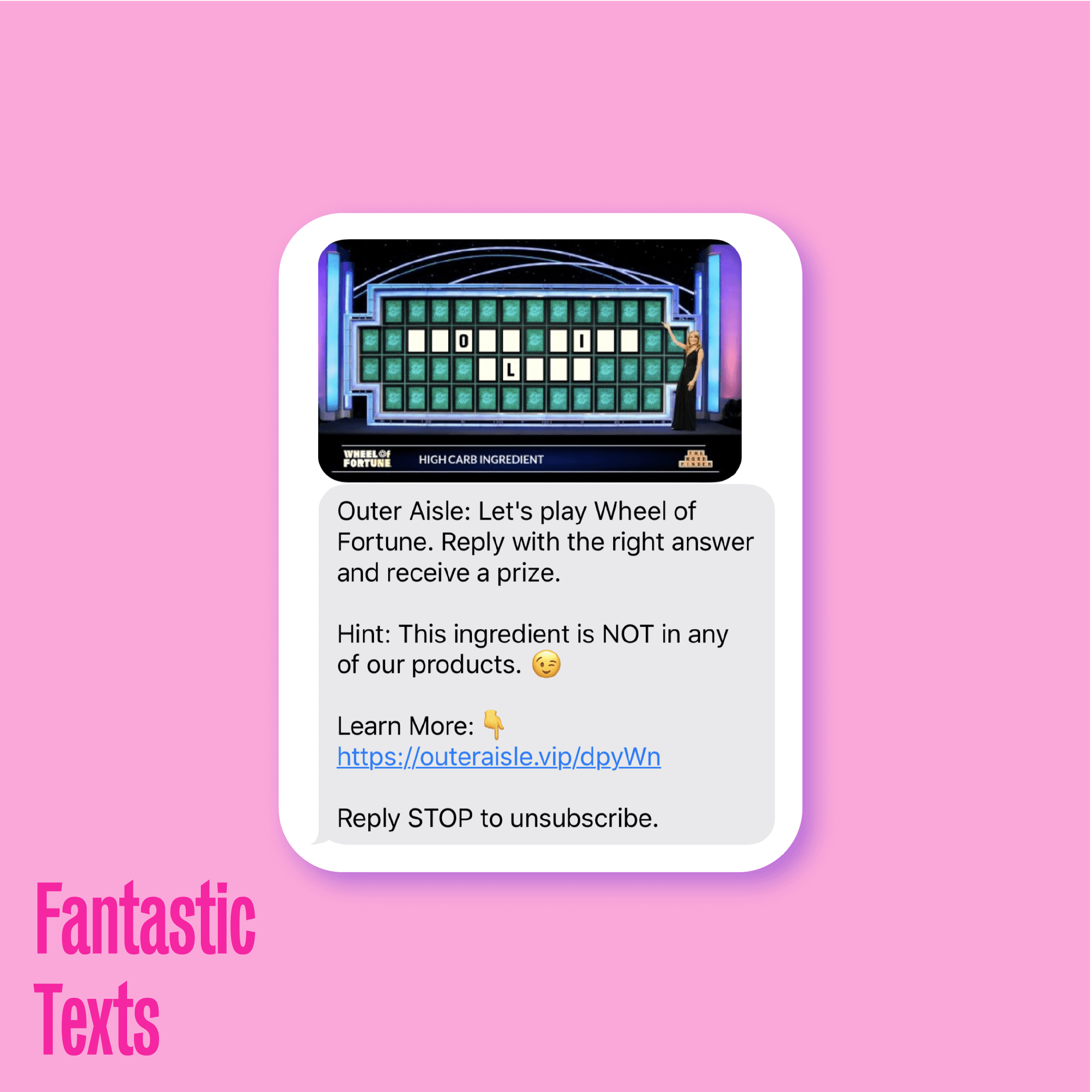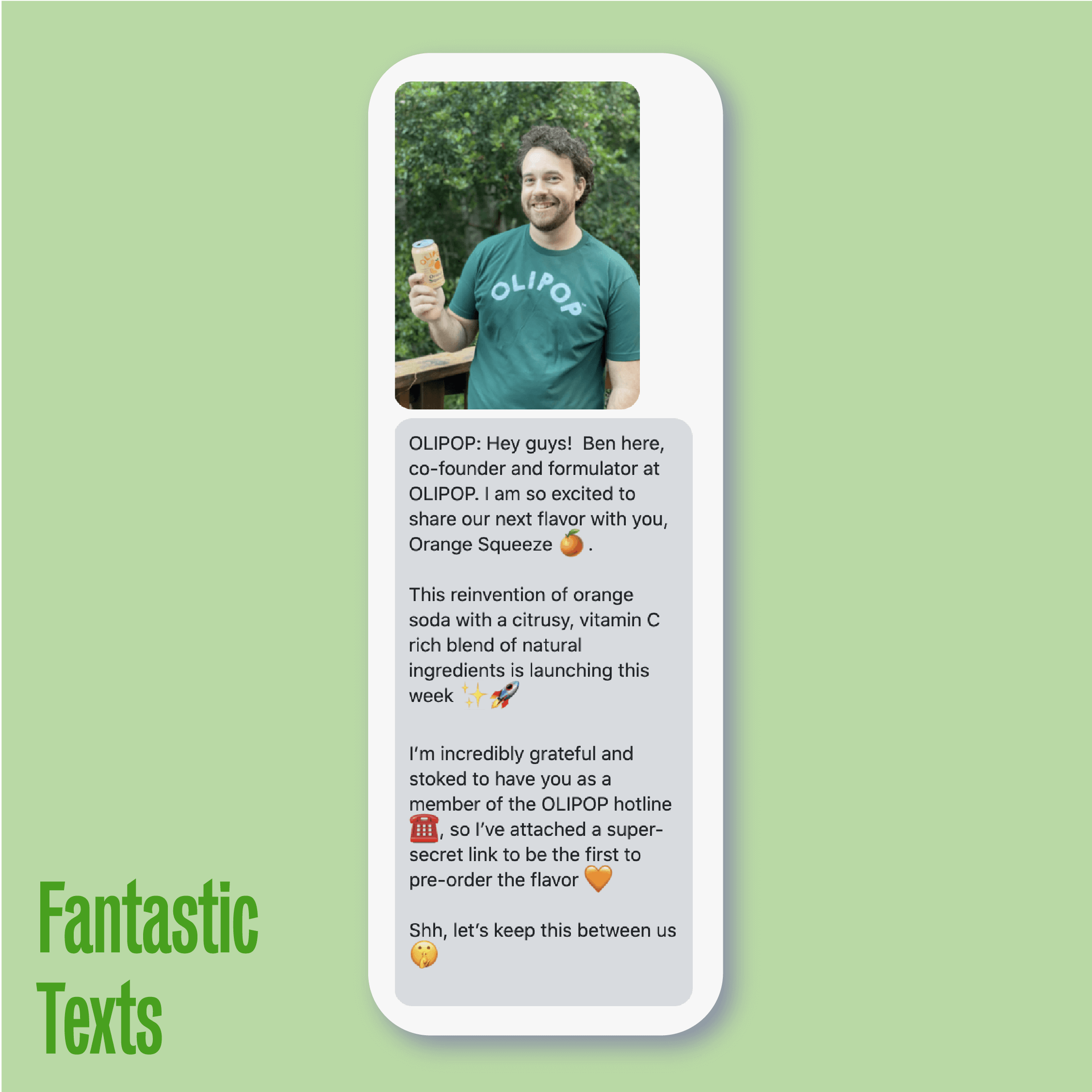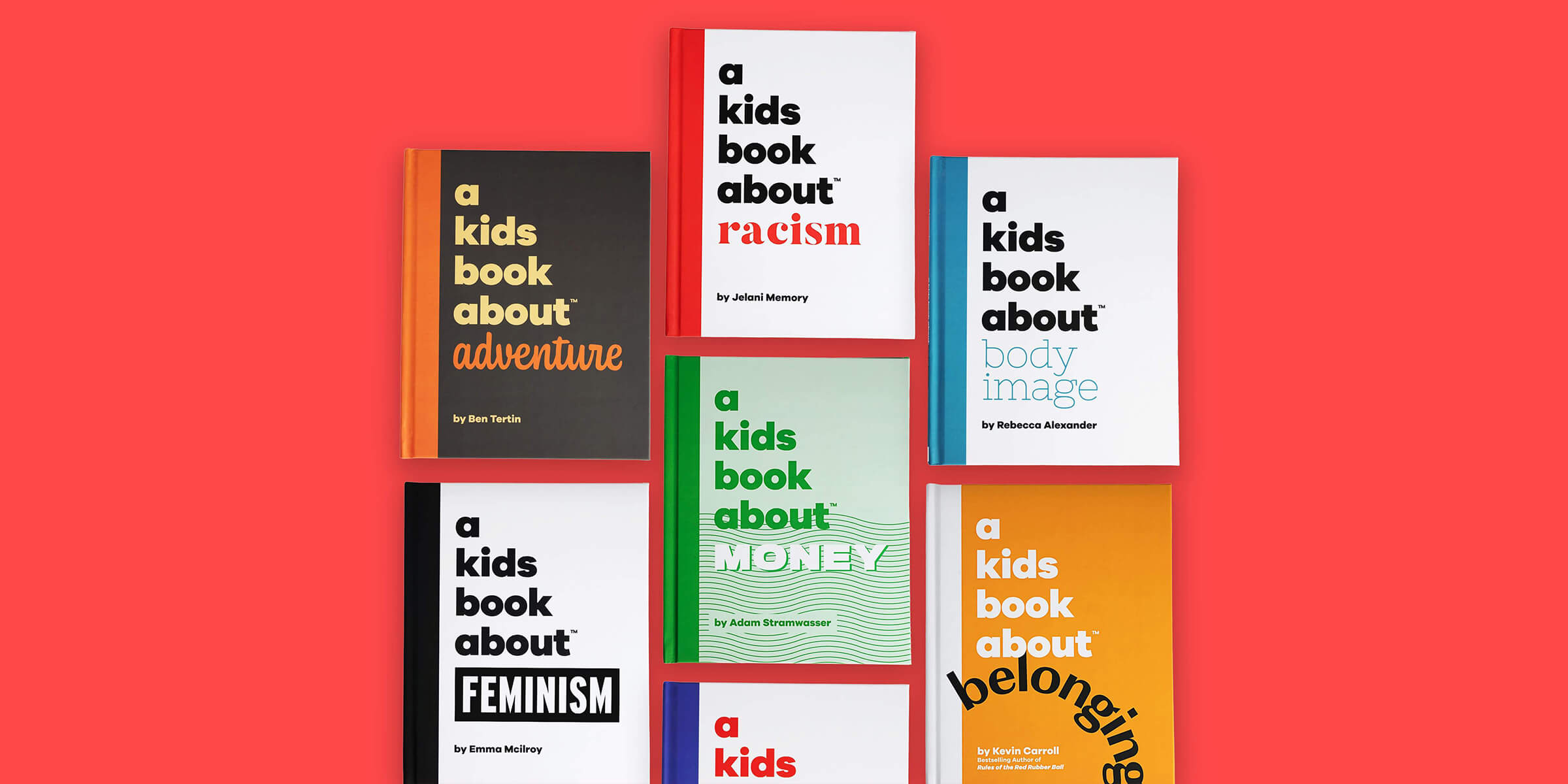Just like Really Good Emails, we're showing off the email space, they're showing off the tech space.
Super excited to be here with you. I have enjoyed getting to know you recently and feel like we are like good buddies. Why don't you give everybody a little bit of background on how you got into this?
Alex Beller: Thanks for having me. It's a pleasure to be here. I think of us as simpatico. How did I end up here? What Postscript does is a little bit more narrow than your typical approach or topic. Postscript only does one thing. We work with brands that run on Shopify, so e-commerce businesses, to roll out and manage an SMS marketing strategy. We aren't SMS for any online business. We're not SMS for any retailer. We're SMS very specifically for e-commerce businesses and for ones that run on Shopify.
As we've been learning about this space, what we've seen and how I ended up here today is just a reflection that, like, because texting is so new as like a B2B marketing channel. It's so new. No one knows how to do well. The use cases that we see as being average are bad. People are thinking, Oh, this is the same thing as email, but it's not. It's fundamentally different. You probably know this, we all communicate differently with our friends over email than we do over text.
It's a very different channel. It's two way. People are more sensitive to it. As more and more companies started adopting SMS as a marketing and communication channel, we saw that the ones who took an SMS first approach and the ones who treated their audience with a little bit more respect and engaged with it as a two-way channel versus just viewing it as like, Ooh, a new marketing channel that gets high opens.
Let's send as many texts as we can through there. The ones who took the former approach. They're the ones doing way better. They're the ones seeing higher ROI, lower unsubscribes, just across the board.
Matthew Smith: That's fascinating, man. I love that kind of insight. Do you all work with these companies, and do they allow you to manage it? And then you get to know some of that data. Is that how you hear some of this?
Alex Beller: We work with a couple of thousand e-commerce brands. We're going to look at a few examples. They use Postscript to send out their texts. We do not manage it for them. We provide the tech platform. But the reason we built Fantastic Texts was a couple of reasons.
We've seen in the space that Really Good Emails provides this great anchoring and inspiration point for email best practices and design inspiration. Because SMS is a new channel, we felt like something like that was needed because, as I was saying, it's new.
Most brands and most marketers aren't sure what good looks like yet. We were always hearing from our customers, like what types of messages are working elsewhere? Like what's good creative look like? So we wanted to create a repository to help solve that.
Matthew Smith: What's this first brand?
Alex Beller: Blume. This is one of my favorite all-time examples. As you might imagine, having started this company, I get many texts. I'm on a lot of lists. Blume is one of my all-time favorites. Blume is a women's healthcare brand. They make a few different feminine care products. Some are offered via subscription. Some aren't.

You all should check them out because their website is beautiful, and they care a lot about design. What stands out about this and why I wanted to share it is that if you look at this text that they're sending out to their subscribers, it is not a marketing message. If you sign up for texts from Blume, you're probably thinking, you're going to hear about new product drops, you're going to get an abandoned cart text, or maybe you're going to get a tracking link when you order something in this text, they're just giving their subscribers something they're saying, Hey, here's a Starbucks gift card, take this into your local store, scan it, and you'll get a free drink on Blume.
They've done this a handful of times. It's just a surprise and delight engagement maneuver to keep their SMS list warm. It's so easy to wear people out via text. You have to be sensitive. You can't just market to them all the time. This is just a pure customer engagement play.
The response to it and the sentiment from it was just profound and off the charts, as you would imagine, the replies that come back to Blume when they send these out, which they do maybe every other month or like, Oh man, you guys are the best. So cool. Like thanks so much. Getting that sort of response to like a marketing channel is really powerful.
This is just a cool outside the box, not a traditional use case that we've seen work well.
Matthew Smith: In the SMS space, is it similar to email where like if we send out an email like I sent out one this last week that was more personal and people reply to it, and I reply. Are there tricks like that? Like that's good for our list. As long as I CC hello@reallygoodemails.com, like it keeps the list in positive light in terms of the list management. Does SMS work that way? Are there now bodies that are governing some of this and keeping track of it?
Alex Beller: Halfway between yes and no. The yes part is that it is a heavily regulated space.
You have to get opt-ins the right way. Otherwise, you're liable for gigantic huge penalties, much bigger than email—$ 500 per message. At the same time, if you're following all those compliance rules, even if you're marketing to people, if you're sending out the same thing to your whole list, two or three times a week, you're going to get tons of unsubscribes.
It doesn't help with deliverability a tactic like this like you're asking, but what it does help with is keeping a healthy list and keeping people engaged by not over-marketing to it. Our cell phone is a personal space, and our SMS inbox is an intimate space. We don't want to be over-marketed to there.
Matthew Smith: Tell me about this brand. What's going on here?
Alex Beller: One of my favorites, a creative use case, Outer Aisle, they make cauliflower infused bread products, and they're blowing up big. So it's replacing traditional gluten and carbohydrates and things like that.

Instead of showing you marketing campaigns or abandoned cart messages, they just figured out that there are a couple of different, weird, or use cases. They were like, Hey, let's abuse the fact that SMS is a two-way channel, and let's play a game with our subscriber base. This is a fun or informational message they sent out. It's saying, Hey, let's play Wheel of Fortune. Reply with the right answer and get a prize.
Users could reply, guessing to solve the puzzle up top. If they got it right, the Outer Aisle support team was replying again via text with a discount code for the product. That's another, just so high engagement. It's not getting a text that says, click here to get 10% off. This is fun, and it's unique, and it's creative.
Matthew Smith: It's so interesting. The psychology behind some of this stuff is really important to engage your users in a much more relational way. This is a big message for me that I'm always hammering is get out of your narcissistic. Here's about us. Here's about us. Instead, start saying, Hey, I want to be in a relationship with you. I want to create a connection with you. I want to serve you. I want to help you enjoy something. I'm a bread company. I'm here to add a little bit of like a smile to your day. That's unique. I love it.
Alex Beller: It's not taking themselves too seriously at all. That's like the core of a good SMS strategy. You got to lose all the corporate marketing speak at the door. You got to think of this as like texting your friend.
Matthew Smith: How about this guy?
Alex Beller: This is the perfect third example of the theme we just hit on. So OLIPOP, they're a fantastic natural soda brand. My favorite flavor is strawberry vanilla, and they're delicious. So what they did here, this is a product drop text. It's written from the voice of Ben, one of their co-founders.

If you're a subscriber to OLIPOP, you're probably like they have a cult following. You're probably in on the cult if you're subscribed to their SMS channel. This is getting a personal text from their founder, announcing a new flavor, and they only have like four flavors. So it's a big deal. It's worthy of a text.
Because it's written in the first person, that's also like a pretty personal message to get that fits how SMS should be used. If you reply, you're going to connect with their team, and you're going to be able to converse. So this is treating SMS is like a personal channel. It's two way. Great use of emojis nice-looking can in that picture and unique first-person voice.
Matthew Smith: The photo here is not; nobody stood in the studio. This guy is like just a regular guy, and that feels cool in the sense of it's a lot closer to something that, again, it's very personal. Not every brand is that going to be right for it, but that's pretty interesting here. This is a reasonably long message for something like this. I think it's interesting to know that it performed well. When you're in this personal voice, what's available in SMS in terms of personalization or segmenting and things like that?
Alex Beller: It'll vary by platform, but in our use case for Postscript, e-commerce, there's a lot there. You can pull in dynamic tags, just like an email. So you could personalize the message with the user's first or last name, previous products they've bought, any piece of data that you have with a merge tag that could be placed into a message.
At the same time, this message probably didn't go out to their entire marketing list. It probably went out to like a relevant segment. So maybe it's folks who bought more than one flavor, or perhaps it's folks who've signed up to get notifications when they drop new flavors. There's a ton of segmentation available, and that is the right strategy.
You should not be hitting send all the same message to everyone because it's impersonal. Instead, it should be based on what they've bought previously, what actions they've taken on-site, how much correspondence they've done, all kinds of stuff like that. Where do they live, et cetera.
Matthew Smith: You've helped us think through a lot of this stuff. I'm going to try and summarize what I'm learning. Remember that SMS is a much more personal channel than an email. Email's already more personal than something like social and more personal than something like just the generic web. SMS is that much more. SMS is the same environment that we're texting our friends and family. Maintain that personal note.
You will have the most significant effect and the least number of unsubscribes when you are not just writing personally, but your message is segmented to people for whom that message serves them more because of an action they took.
In terms of strategy, if you can surprise and delight, we saw real success there. We saw using a personal tone and being able to reveal something that feels special to somebody. There's almost like a specialness, a sacredness, an "on the inside" track feeling that seems to do well in some of these messages. Is that right?
Alex Beller: Right. The way I phrase that dynamic is I encourage new folks approaching SMS to think of it as their VIP channel. Have respect for the users. They're your biggest fans if they're signing up here because it is so personal. People will probably only opt into a handful of maybe at most like eight brands on SMS. It's going to be a lower threshold than on email. So if you're one of theirs, it's a pretty big deal.
Matthew Smith: I can imagine that when you're asking people if they want to opt-in that there's some messaging there that is critical about, Hey, be a VIP, get in on the stuff that not everybody else does. What else seems to track well when getting those opt-ins for SMS specifically?
Alex Beller: The best performance that I've seen in gathering opt-ins reflects the brand and actually how they merchandise. If it's someone like OLIPOP, who has a cult following, and they have four flavors, and they probably come out with a new flavor, like once a quarter, A great way to get people on the list is probably like, be the first to know when our next flavor drops. That's an excellent lever for them.
If you're Brooklinen, you're a retailer that has inventory regularly available. Maybe it's just the traditional like, Hey, grab 10% off your first purchase by signing up here. The last one that I see success with is just the incentive of like a generic VIP list. Join our VIP list. Get access to first, look at new products, get access to like discounts, get access to like premium support, things like that. Those tend to be the three biggest signup levers.
Matthew Smith: Thank you for being here and sharing this insight with us. Where can people get more of these fantastic texts?
Alex Beller: FantasticTexts.com. Nice and easy. It's sitting there waiting for them.
Matthew Smith: Appreciate you. Thanks for being here.
Alex Beller: Thanks for having me.
Matthew Smith: All right, everybody out there, email geeks, have a wonderful, wonderful weekend. Be well to each other. Be really good. Ciao.


